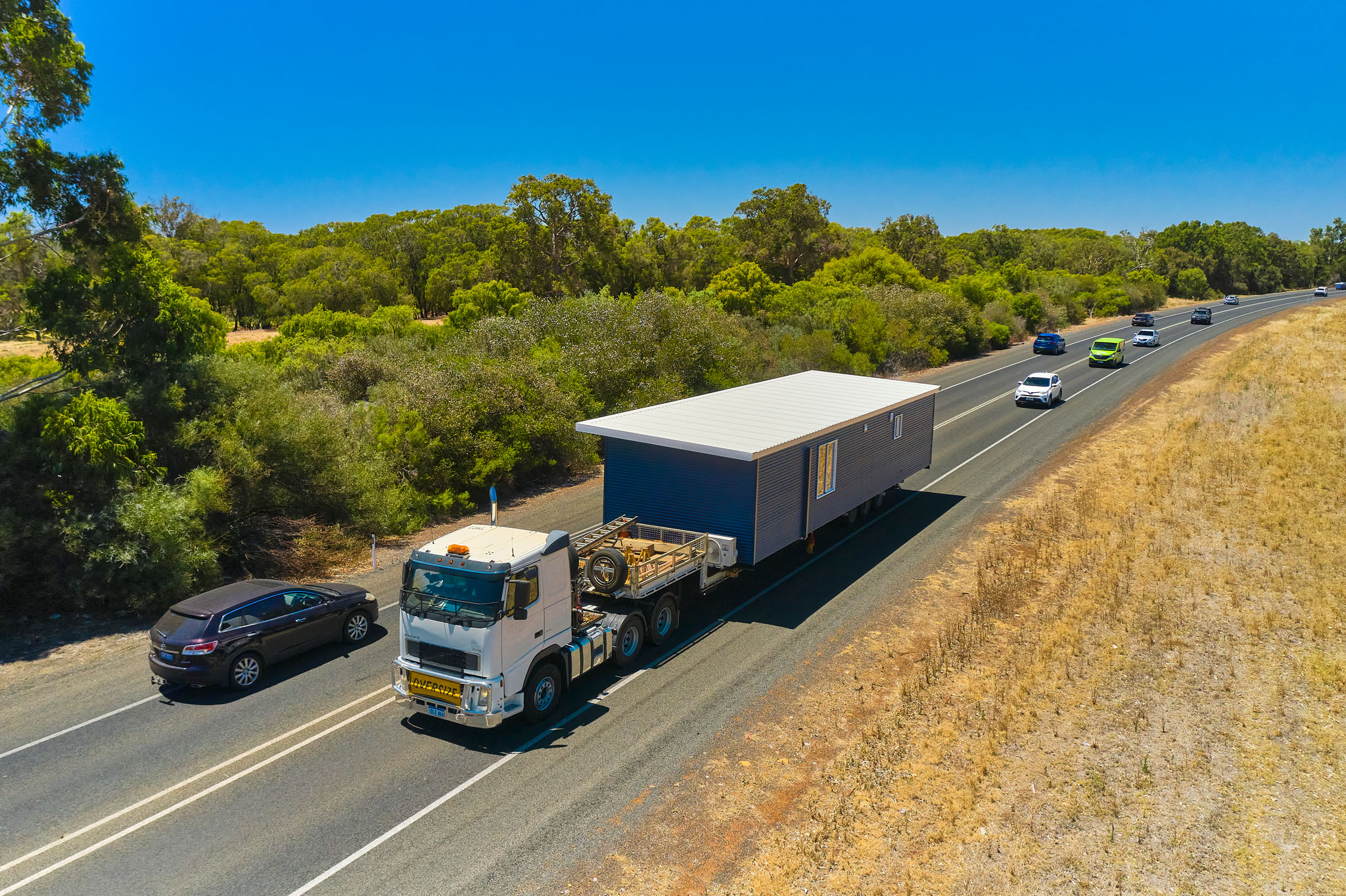Part of the appeal of transportable homes is the fact that you can move them when necessary. While you can tear down and move nearly any house, the cost and effort make most people think twice about such a project.
Comparatively, moving a transportable structure is much easier than a traditional house. However, moving transportables requires skill, the correct equipment, and a few permits.
The construction of a transportable is what makes moving it a manageable project. The transportable is built in an indoor facility on skids, making moving it much easier than if constructed in conventional ways. The material can vary based on what a customer wants in their custom-designed home. However, it is a fallacy that transportable buildings are not durable. These homes must pass inspections and meet stringent standards. Your transportable home is safe and secure.
Because these homes are made for transport, the designs are intelligent and future moving is possible. The Fox Transportable line of residential transportables will travel easily on trucks made for moving this type of cargo. Fox Transportables are experts in their field, so your transportable home ships from the factory to your building site with little fuss.
How to Move Your Transportable
After your transportable is set up, you can expect decades of comfort in your home. However, taking your transportable is a manageable task if you need to relocate.
- Dig the transportable house from the ground – By removing the foundation, there is less chance of damage and lifting it will be much easier.
- Prepare the house by locking all doors and windows – For added safety, consider taping them shut in addition to locking them.
- Disconnect all service lines – Cut all electric, water, and phone lines to prevent accidental damage when lifting the house.
- Lift the house – Once everything is secure, the house is either jacked up or lifted by a large crane. The home may be placed on sturdy supports that prevent movement.
- Attach the house to the transport vehicle – A large customised, low-beam truck with a steel base platform is typically used for transporting homes. The truck’s design accommodates the houses and helps ensure safe transit. Once the house is on the truck, chains and locks will ensure it stays in place for the move.
- Ensure you have the correct documents – The documents you need to move your transportable legally may vary based on location and areas you will pass through. A separate vehicle will follow behind the truck carrying your house. In some instances, police escorts may also be present. In Western Australia, vehicles wider than 5.5 metres and/or longer than 40 metres require a Traffic Escort Warden (TEW) presence.
- Place the transportable home in its new location – Upon arrival at the new site, the team in charge of transport will set the house in its new area. It is vital to ensure the spot where the house will be relocated is prepared and ready when the transportable house arrives.
- Inspect for damage and hook up utilities – Professionals will ensure that your home has not been damaged during transit and attach the appropriate utilities to your home. Any unplanned maintenance would take place now as well.
The list above is a brief detail explaining how you would move your transportable home. It expresses the situation under ideal circumstances with no unexpected problems.
Things to Consider Before Moving a Transportable
Cost is a significant factor when you are thinking about relocating your transportable home. There are several factors to think about when you are weighing your options and the cost of relocating your movable house.
- Distance – How far your home must travel is a significant factor in the cost of moving it. For instance, a 20km trip may cost two or three thousand dollars. A 400km move will likely cost upwards of ten times as much.
- Width – The wider your home (including eaves), the more restrictions and escorts you will have, and these all add to the overall price tag
- Height – Generally, roads have a height restriction of 5.0m off of the ground. Above that height, you will need high-load piolet vehicles and approval from utility companies. These alter your route and add time to the process. This does not take into consideration older bridges that may have lower restrictions.
- Length – The length of your transportable home has constraints based on the size of the truck and trailer combination. Typically, a length of 18m allows for maximum maneuverability and the safest driving conditions.
- Truck Loads – When you must add several trucks to accommodate your home safely, you are exponentially driving up the cost of the move. Not only will the trucks and drivers cost more, but you may have to pay for additional escorts to satisfy safety regulations.
- Obstacles That Limit Site Access – Any number of seemingly ordinary details are enough to make reaching your site difficult or impossible. Bridges and roads with lower-than-average weight limits, low-clearance overpasses, low-hanging power lines, and steep or unusually winding roads are just a few of the potential hindrances that can cost you time and money.
Time is another factor to look at when considering moving your transportable home. Distance and obstacles are two factors that can add a great deal of time to your move. Additionally, poor weather conditions can make the move unsafe.
While transporting a transportable home is doable, you need to weigh all the factors in deciding if it is a smart plan. If you need expert advice on the matter or want to consider another transportable, contact Fox Transportables. Since 2009, the experts at Fox have been providing top-of-the-line transportables for residential and commercial use. They understand what is involved in the move and can give you some tips to make it easier.


